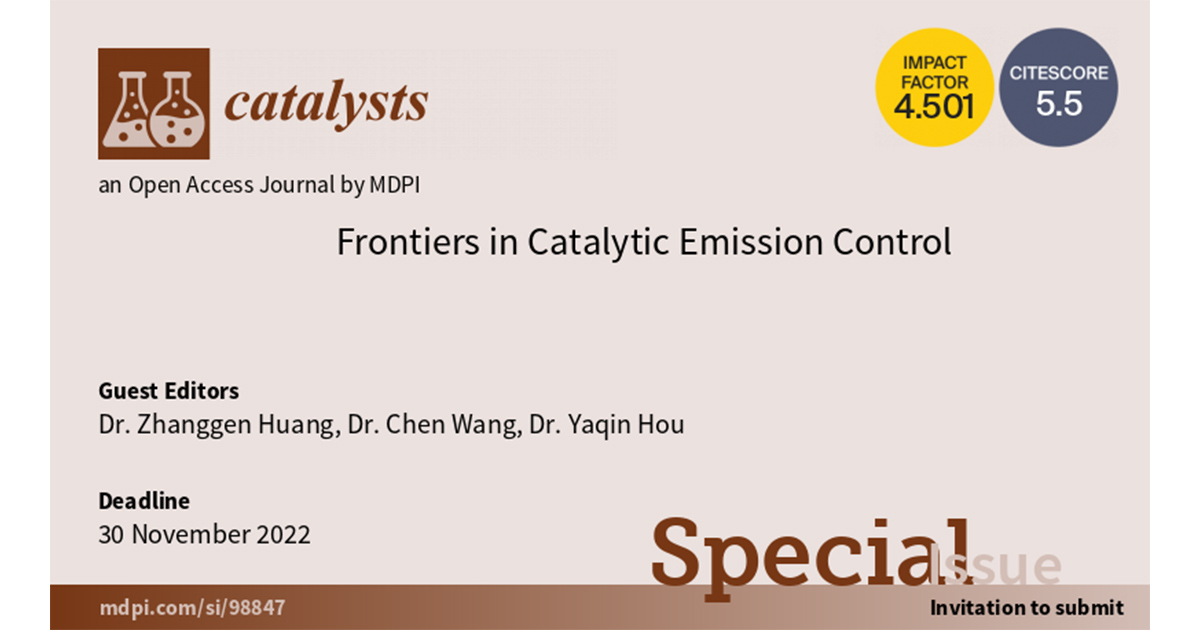Frontiers in Catalytic Emission Control
A special issue of Catalysts (ISSN 2073-4344). This special issue belongs to the section "Environmental Catalysis".
Deadline for manuscript submissions: closed (30 November 2022) | Viewed by 9808

Special Issue Editors
Interests: Preparation and modification of activated-carbon-based materials; Catalysts and processes for the removal of flue gas pollutants; Treatment of refractory organic wastewater and metal-containing wastewater.
Interests: automobile catalysts; vehicle pollution control
Special Issue Information
Dear Colleagues,
Catalysts is releasing a Special Issue on the “Frontiers in Catalytic Emission Control”. The emission of gaseous pollutants such as SO2/NOx/CO/HCs/VOCs/CO2/Hg emitted from power stations, factories, and automobiles is believed to be one of the most serious environmental challenges of the 21st century. To meet the ever-increasing demand for the control of the ecological environment, this Special Issue collects the developments made regarding flue gas. We are interested in, but not limited to, the study of low-temperature denitration catalysts, VOCs catalytic oxidation technology, and technology for the coordinated control of multiple pollutants. Particular focus is on the discovery of novel environmental catalytic materials, in situ reaction mechanisms, DFT calculations for catalytic processes or mechanisms, and catalytic models for applications.
Dr. Zhanggen Huang
Dr. Chen Wang
Dr. Yaqin Hou
Guest Editors
Manuscript Submission Information
Manuscripts should be submitted online at www.mdpi.com by registering and logging in to this website. Once you are registered, click here to go to the submission form. Manuscripts can be submitted until the deadline. All submissions that pass pre-check are peer-reviewed. Accepted papers will be published continuously in the journal (as soon as accepted) and will be listed together on the special issue website. Research articles, review articles as well as short communications are invited. For planned papers, a title and short abstract (about 100 words) can be sent to the Editorial Office for announcement on this website.
Submitted manuscripts should not have been published previously, nor be under consideration for publication elsewhere (except conference proceedings papers). All manuscripts are thoroughly refereed through a single-blind peer-review process. A guide for authors and other relevant information for submission of manuscripts is available on the Instructions for Authors page. Catalysts is an international peer-reviewed open access monthly journal published by MDPI.
Please visit the Instructions for Authors page before submitting a manuscript. The Article Processing Charge (APC) for publication in this open access journal is 2700 CHF (Swiss Francs). Submitted papers should be well formatted and use good English. Authors may use MDPI's English editing service prior to publication or during author revisions.
Keywords
- air pollution
- pollutant removal
- volatile organic compounds (VOCs)
- catalytic processes
- catalytic mechanism
- catalytic models







